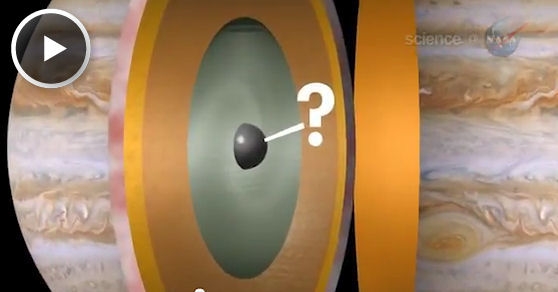NASA’s Juno probe, scheduled to launch on August 5th, could change all that. The goal of the mission is to answer the question, What lies inside Jupiter?
There are many basic things researchers would like to know—like how far down does the Great Red Spot go? How much water does Jupiter hold? And what is the exotic material near the planet’s core?
Jupiter is made primarily of hydrogen, but only the outer layers may be in gaseous form. Deep inside Jupiter, researchers believe, high temperatures and crushing pressures transform the gas into an exotic form of matter known as liquid metallic hydrogen–a liquid form of hydrogen akin to the slippery mercury in an old-fashioned thermometer. Jupiter’s powerful magnetic field almost certainly springs from dynamo action inside this vast realm of electrically conducting fluid.
Unlike Earth, which lights up in response to solar activity, Jupiter makes its own auroras. The power source is the giant planet’s own rotation. Although Jupiter is ten times wider than Earth, it manages to spin around 2.5 times as fast as our little planet. Click the image below for you tube clip…..


